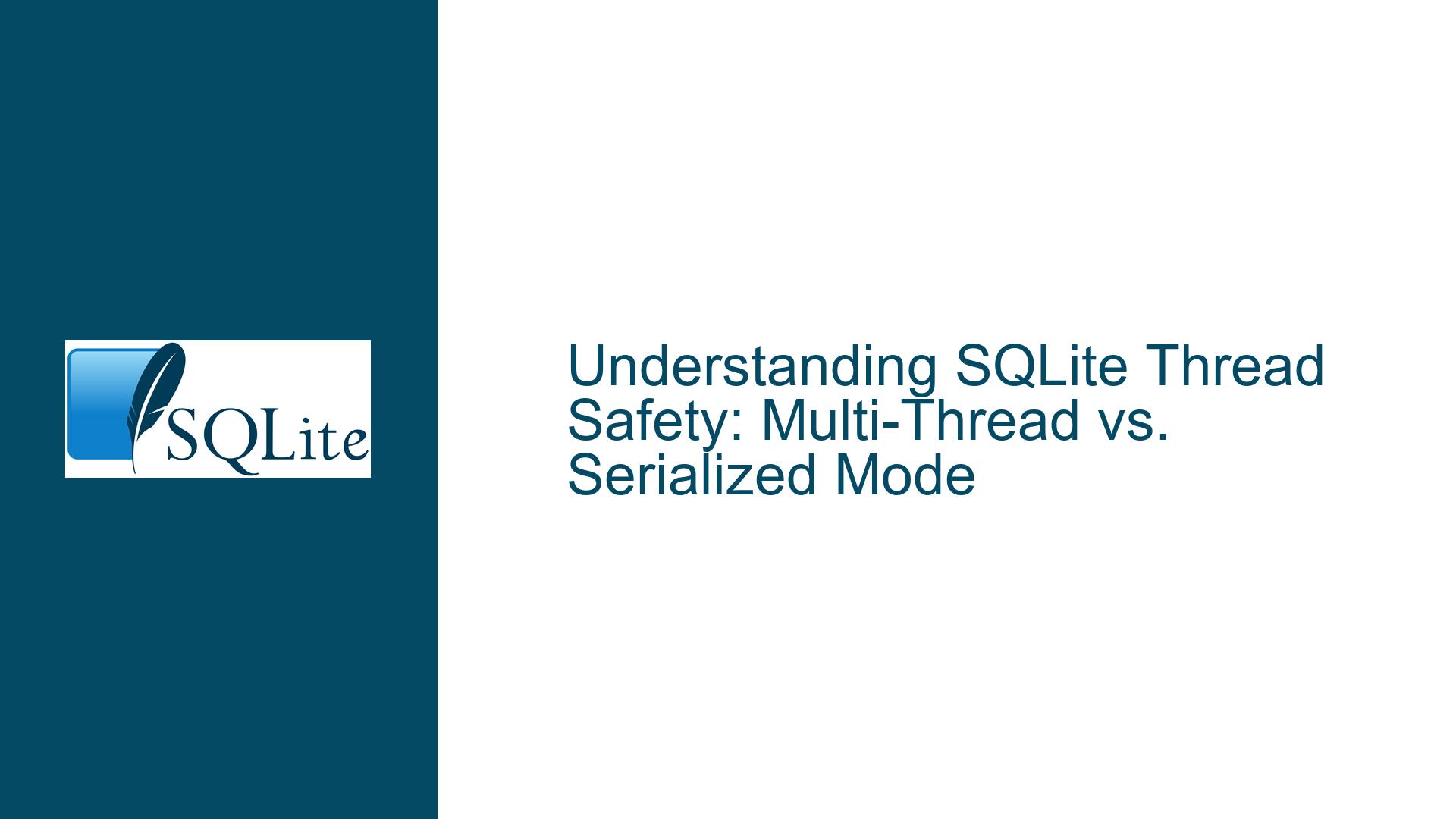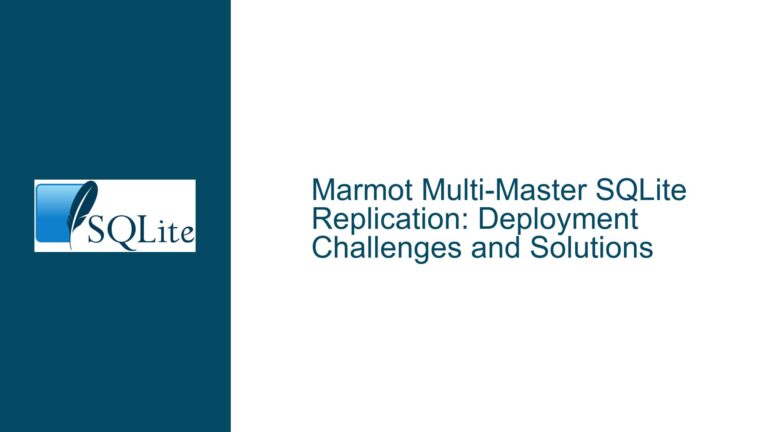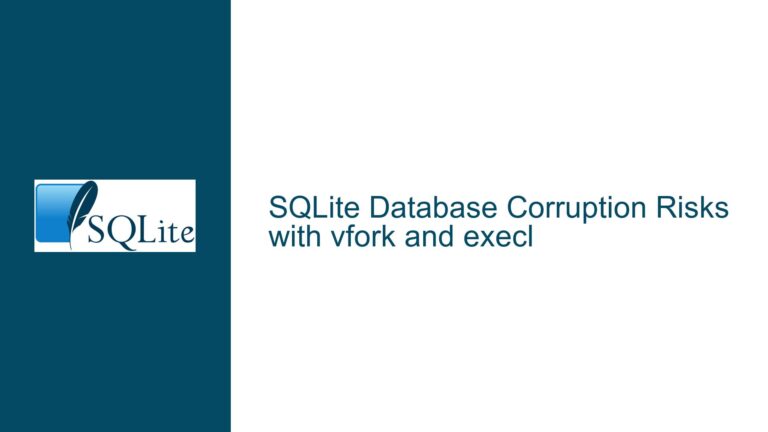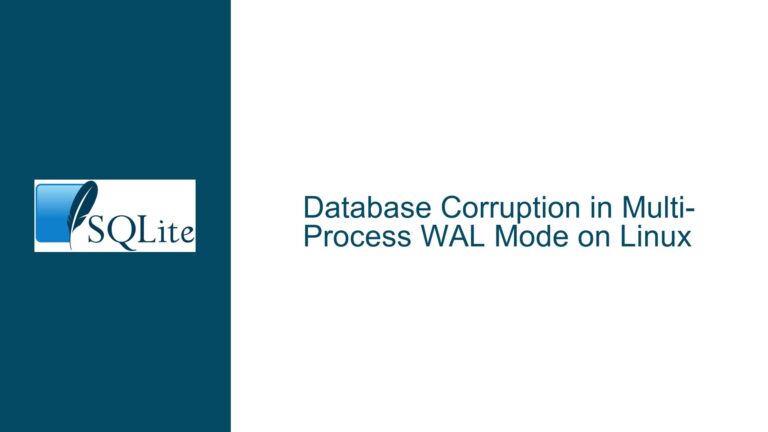SQLite Thread Safety: Multi-Thread vs. Serialized Mode
SQLite Thread Safety in Multi-Threaded Applications
SQLite is a lightweight, serverless database engine widely used in applications ranging from embedded systems to mobile apps. One of its key features is its ability to operate in different threading modes, which determine how the database handles concurrent access from multiple threads. The two primary modes of interest are Multi-Thread and Serialized modes. Understanding the nuances of these modes is critical for ensuring thread safety and optimal performance in multi-threaded applications.
In Multi-Thread mode, SQLite allows multiple threads to interact with the database simultaneously, provided that no single database connection is shared across threads. This mode is efficient but requires strict adherence to the rule that each thread must have its own dedicated database connection. Violating this rule can lead to undefined behavior, including data corruption or application crashes.
In Serialized mode, SQLite ensures complete thread safety by serializing access to the database. This means that even if multiple threads attempt to use the same database connection, SQLite will internally manage the access to prevent conflicts. While this mode is safer, it can introduce performance overhead due to the serialization of operations.
The core issue in the discussion revolves around understanding the differences between these modes, their implications for thread safety, and how to correctly implement multi-threaded database operations in SQLite. The discussion also highlights common pitfalls, such as sharing database connections across threads or misconfiguring the SQLITE_THREADSAFE flag, which can lead to runtime errors or data corruption.
Interrupted Write Operations Leading to Index Corruption
One of the most critical aspects of SQLite’s thread safety is how it handles write operations in multi-threaded environments. When multiple threads attempt to write to the database simultaneously, the risk of interrupted or conflicting operations increases. This can lead to index corruption, data inconsistencies, or even complete database failure.
In Multi-Thread mode, SQLite relies on the application to enforce the rule that no two threads share the same database connection. If this rule is violated, the database engine may attempt to perform concurrent write operations on the same connection, leading to race conditions. For example, if one thread is executing an INSERT statement while another thread is performing an UPDATE on the same connection, the internal state of the database connection may become inconsistent, resulting in corrupted data.
In Serialized mode, SQLite mitigates this risk by serializing all database operations. This ensures that only one thread can execute a write operation at any given time, even if multiple threads share the same connection. While this approach eliminates the risk of race conditions, it can introduce performance bottlenecks, especially in high-concurrency scenarios.
The discussion also touches on the role of the SQLITE_THREADSAFE flag, which determines the level of thread safety enforced by SQLite. When set to 2 (Multi-Thread mode), SQLite assumes that the application will manage thread safety by ensuring that no two threads share the same connection. When set to 1 (Serialized mode), SQLite takes full responsibility for enforcing thread safety, but at the cost of reduced performance.
Implementing PRAGMA journal_mode and Database Backup
To ensure thread safety and prevent data corruption in multi-threaded applications, developers must adopt best practices for managing database connections and configuring SQLite’s threading mode. One such practice is the use of the PRAGMA journal_mode directive, which controls how SQLite handles transaction logging and rollback.
The PRAGMA journal_mode directive supports several modes, including DELETE, TRUNCATE, PERSIST, MEMORY, and WAL (Write-Ahead Logging). Each mode has its own trade-offs in terms of performance and durability. For example, the WAL mode is particularly well-suited for multi-threaded applications, as it allows multiple readers and a single writer to operate concurrently without blocking each other. This can significantly improve performance in high-concurrency scenarios.
Another critical practice is implementing a robust database backup strategy. In multi-threaded applications, the risk of data corruption due to interrupted write operations or hardware failures is higher. Regularly backing up the database ensures that data can be restored in the event of corruption or failure. SQLite provides several mechanisms for backing up databases, including the sqlite3_backup_init API, which allows for online backups without blocking database operations.
The discussion also emphasizes the importance of properly declaring and managing database connections within threads. For example, in the provided code snippet, each thread opens its own database connection using sqlite3_open. This ensures that no two threads share the same connection, thereby adhering to the requirements of Multi-Thread mode. However, developers must also ensure that all resources, such as prepared statements and database handles, are properly cleaned up to prevent memory leaks or resource exhaustion.
In conclusion, understanding SQLite’s threading modes and their implications is essential for building robust, high-performance multi-threaded applications. By correctly configuring the SQLITE_THREADSAFE flag, using appropriate PRAGMA journal_mode settings, and implementing a reliable backup strategy, developers can ensure thread safety and data integrity while maximizing performance.






